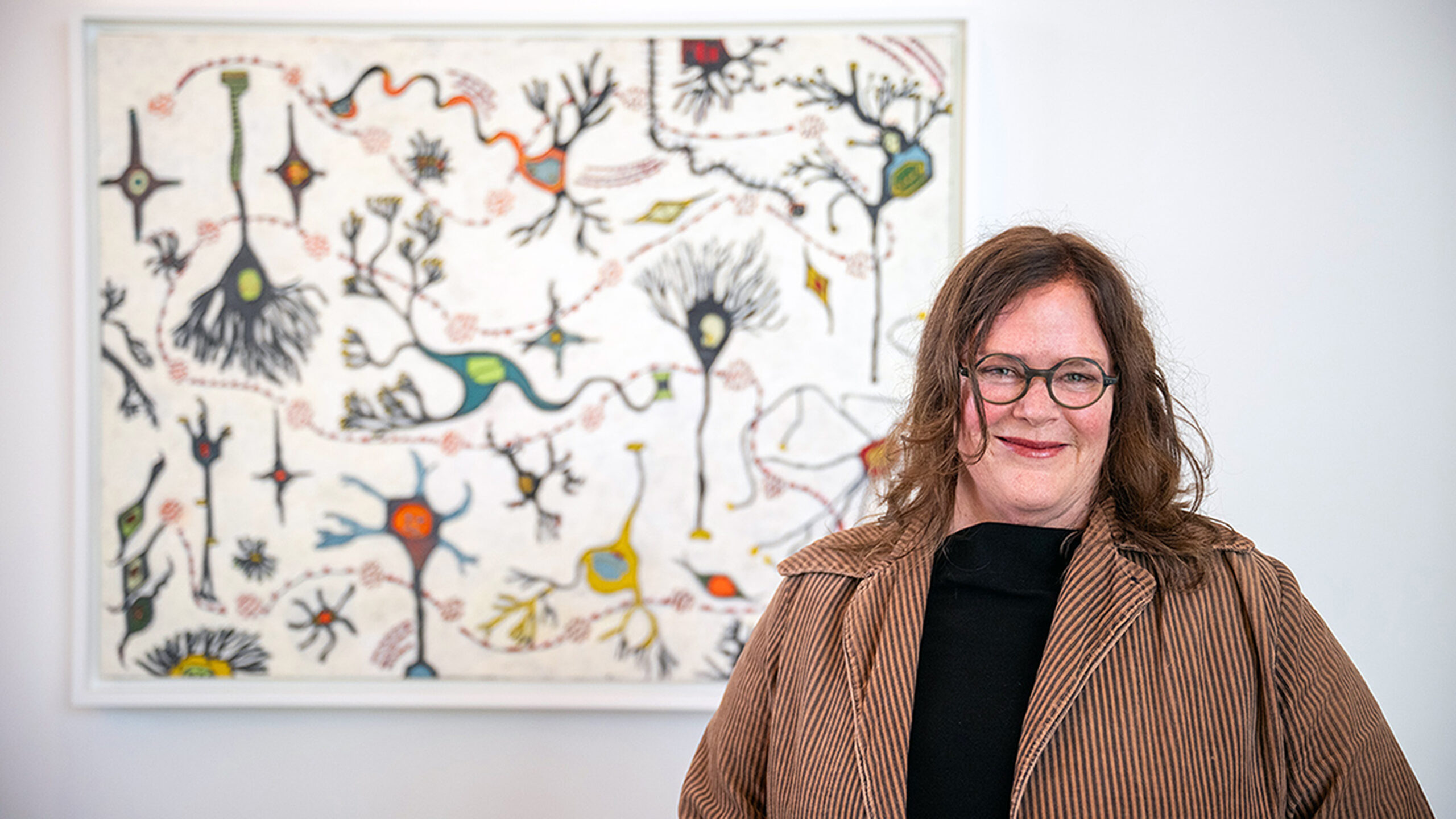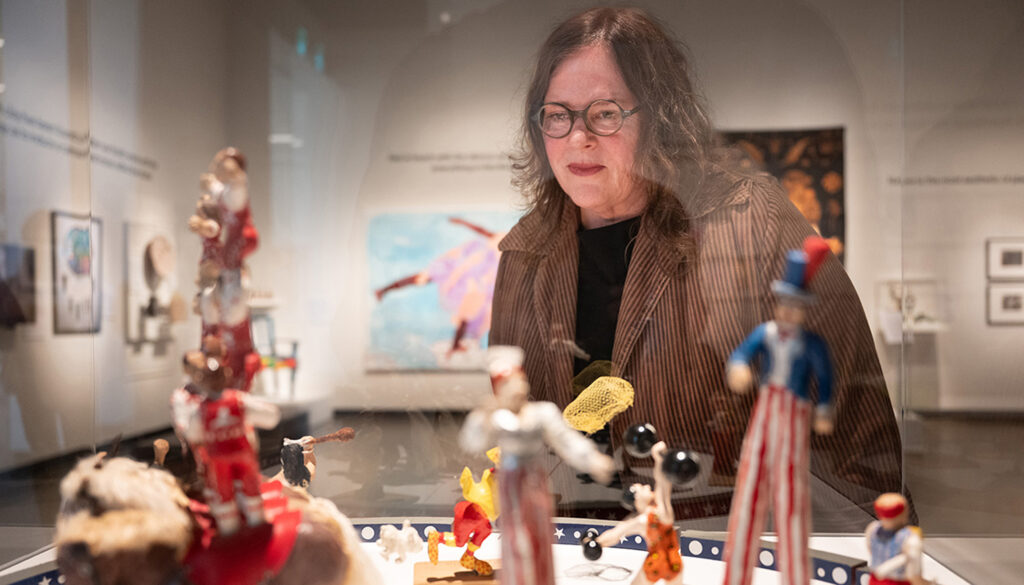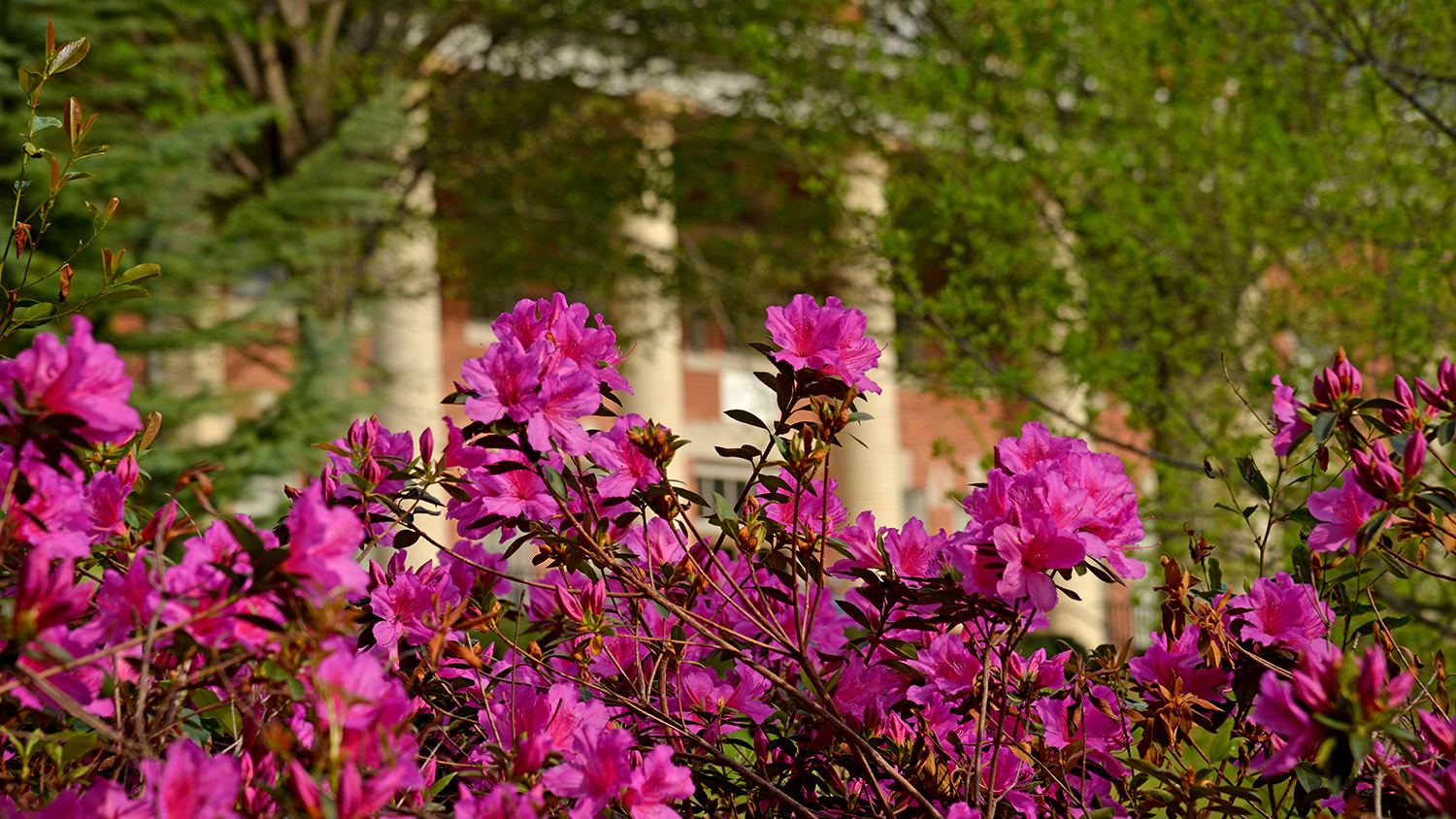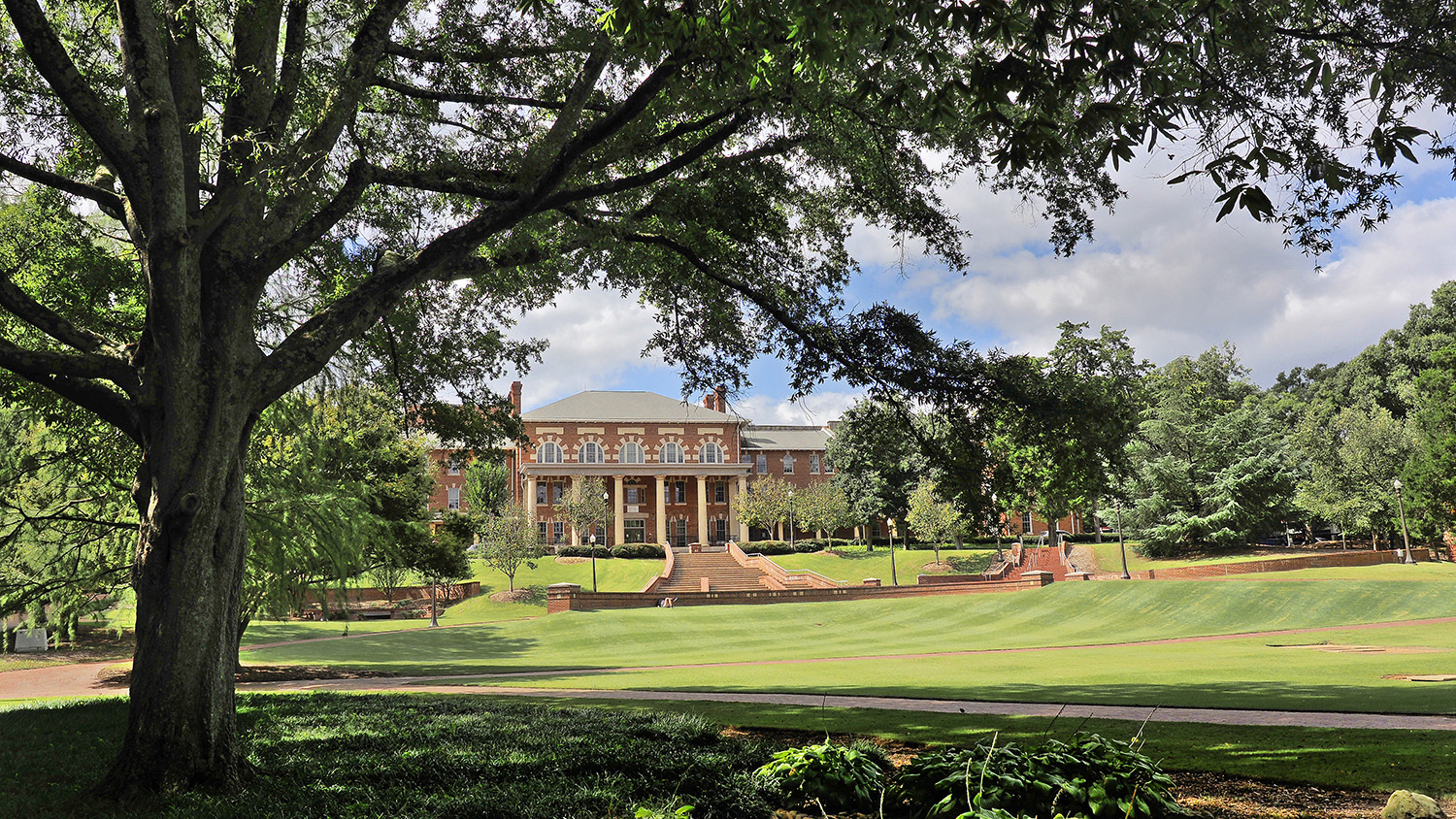From Classroom to Gallery
Arts Studies Professor Victoria Ralston Blends Practice and Theory, Showing Students the Power of Creative Action.

At the entrance to an intriguing exhibit at the Gregg Museum of Art & Design hangs a painting by art studies professor Victoria Ralston — one that invites visitors to explore creativity on a personal level and encourages students to understand the power of creative action by blending practice with theory.
Ralston, coordinator of the visual arts concentration in the Interdisciplinary Studies program, loaned her artwork to the exhibit — Your Brain on Art: Reimagining the Gregg Museum Collection — and consulted with the museum staff to create an interactive component. She drew from her background as an artist, professor and therapeutic art specialist to help shape an environment where visitors actively participate, embodying the exhibit’s theme of exploring how the brain responds to and creates art.
This project reflects the think-and-do philosophy Ralston champions in her classes, encouraging students to bridge theory and practice through real-world creative work. By working across different disciplines, focusing on people and thinking creatively, her work with Your Brain on Art shows students that their academic and artistic talents can be impactful beyond the university.
Ralston described her painting, Neural Tapestry, as an interpretation of brain neurons. She said her inspiration for the piece, an encaustic or hot wax painting, came after hearing a program on neural pruning, which prompted her to wonder how interconnected cells shape our memories, perceptions and behavior.
“This strange and beautiful-looking world of cells struck me as an expression of the human condition and the challenges we face in connecting with each other,” she said.
Using scientific images and illustrations as references, Ralston began drawing and arranging the cells as whimsical, floating characters in an intricate web of brain connections. She said visualizing their movement and interaction led her to think about human connections on emotional, spiritual and playful levels.
“This strange and beautiful-looking world of cells struck me as an expression of the human condition and the challenges we face in connecting with each other,” she said.
At NC State, Ralston teaches studio art courses focused on research and production, such as Puppet Laboratory and Stop Motion Animation. She said her studio work often informs her teaching, especially through public exhibitions.
At the end of every production course, Ralston organizes a student exhibition in local venues such as The Fish Market, the NC State Craft Center or potentially as a pop-up at The Gregg Museum. These exhibitions motivate students to refine their work and complete the full creative cycle of research, iteration and critique, she explained.

When planning the interactive portion of the Your Brain on Art exhibit, Ralston drew on ideas from her classes and experience as a therapeutic art specialist at John Umstead Psychiatric Hospital in Butner, North Carolina. She worked there for 18 years with young adults and adolescents.
For the exhibit, which runs through September 2025, Ralston created a drawing-based activity based on neurographica, modifying the approach and materials to ensure the safety of the artwork on display in the museum’s galleries. She has previously used this creative technique — which blends art and psychology to support mindfulness and emotional release — in one of her interdisciplinary arts classes.
Participants begin by identifying a goal or challenge they wish to release, then draw intersecting lines, round the corners, add color, and finish with bold outlines. The process, she said, is energizing yet calming.
“Artmaking is just like meditating in that it captivates your mind, slows your breathing and focuses your attention,” she added. “This combination results in a shift of experience and perception, allows you to feel different, and helps you feel better.”
“I also hope visitors experience the wonder that artists feel, that I feel, when producing work, and that students feel inspired and encouraged to make their own unique work.”
What does she hope visitors, especially students, take away from the exhibit and her artwork? Ralston said the exhibit offers a rich view of creativity, play and artmaking, and shows how artists shape worlds through intention and research. The act of creating connects us to ideas, materials, and to our minds and bodies, she explained.
Of her work, Ralston said she hopes viewers are drawn into the imagined world of cells and become intrigued by these mysterious forms. “I wonder,” she asked, “can learning about neurons and envisioning them, teach us what it looks like to coexist within a matrix of belonging, attraction, closeness, separation, loss, acceptance?
“I also hope visitors experience the wonder that artists feel, that I feel, when producing work, and that students feel inspired and encouraged to make their own unique work, follow their process as interdisciplinary, collaborative makers, and find exhibition opportunities where they can share what their brain is like on art.”
- Categories:


